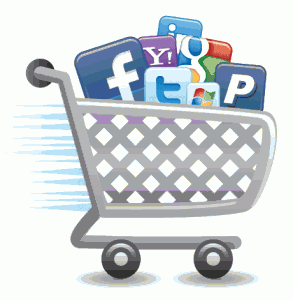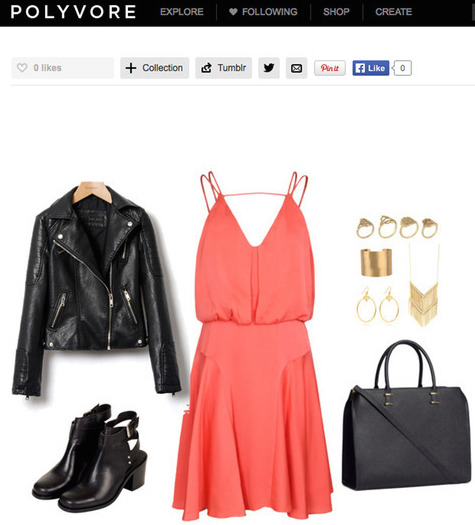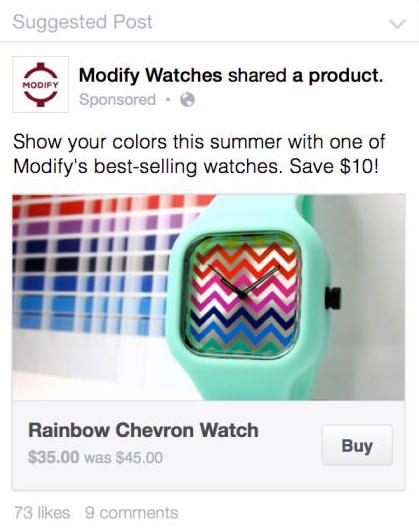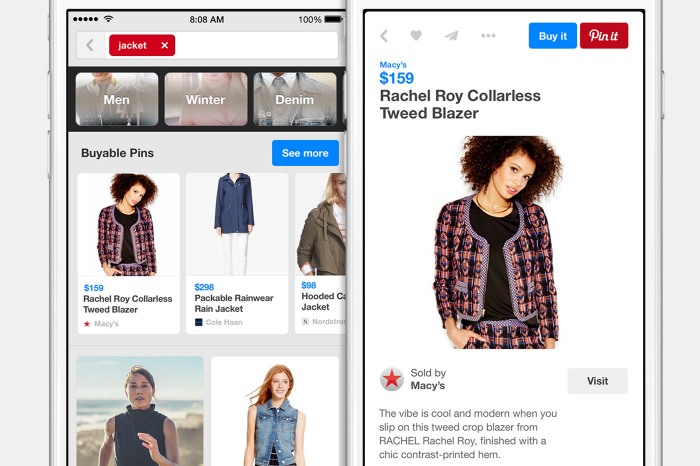We’ve long heard that social media is not the best way to drive sales; in terms of ROI, social is just email marketing’s less successful cousin. But that doesn’t mean it isn’t growing in leaps and bounds, earning larger portions of referral traffic, new leads and total sales figures. Referrals alone from social media sites increased almost 200% from 2014 to 2015. The rise of social commerce over the last few years has brought us to a time when social media platforms are finally fully embracing the Buy button.

Polyvore
Last week, Yahoo announced an agreement to acquire Polyvore, which bills itself as ‘the world’s largest style community.’ What does that really mean? Polyvore is a social commerce site driven by user-generated content – collages of products curated into ‘sets.’ Think Pinterest but with a lot more buying (and selling), and a more specific market (personal style and home décor mainly).
While Polyvore is much smaller than Pinterest, it boasts a community of very qualified leads if you’re in the right business. The average shopping basket of Polyvore users comes in at about $200 according to the site – they’re there to browse and shop, which is more than we can say for other popular social networks. Polyvore claims that their typical users are “twice as likely to have shopped online in the last 30 days than the average online consumer.” Brands can also push sales on the social commerce site by paying to promote items or trends in a pay-per-click model.

Beyond the sales boost, smart businesses can get a lot more out of Polyvore when it comes to branding. It’s easy for retailers to interact with users on Polyvore, driving engagement through likes, follows and comments. Top followers for a retailer can even serve as readymade brand advocates and social influencers. Some brands even use the site as a way to test out new trends and see what’s popular in different target markets, essentially crowdsourcing for their next campaign (check out this Digiday article on Neiman Marcus for an example).
We’ve all seen ads and promoted posts for retailers in our Facebook feeds for quite a while, but the social media powerhouse is ramping up for even more social selling. In June, Facebook released its first shoppable ads with Buy buttons, allowing users to complete the order process without leaving the site.
In the second half of July, Facebook doubled down by launching mini ecommerce shops within a brand’s Facebook page, accessible through a ‘shop’ tab next to the ‘about’ section. It’s still beta testing with help from ecommerce platform Shopify.

While it really remains to be seen what sales effect these additions will have for retailers who buy into social commerce, Facebook is already the most significant driver of ecommerce traffic amongst social sites. 53% of shoppers ages 18-34 say that they use Facebook to stay informed about online shopping opportunities. And with 50% of total social referrals coming from Facebook (and 64% of social revenue), ecommerce retailers can’t afford to ignore the social network, even if it will never drive the sales of email marketing or retargeting.
Pinterest and Instagram
Business Insider’s new social commerce report says that Pinterest drives 16% of social revenue despite having a comparably small audience (6.5 times smaller than Twitter). And that’s before the rollout of Buyable Pins, announced in June, which allows pinners to buy the products they like directly within the Pinterest API, desktop or mobile.

Instagram doesn’t currently hold much sway in the social commerce world, most likely because photos posted don’t allow for links out. It’s not an ideal platform for driving social referrals; I follow brands like H&M on Instagram, but when I see a product I like, my only option is to open a browser and search for it, and more than once I’ve come up empty-handed. What a missed opportunity! Most businesses that use Instagram are counting on it as a branding platform and not a sales driver. This might change now that new Instagram Ads are making it possible to add buttons like “Shop Now” and “Learn More.